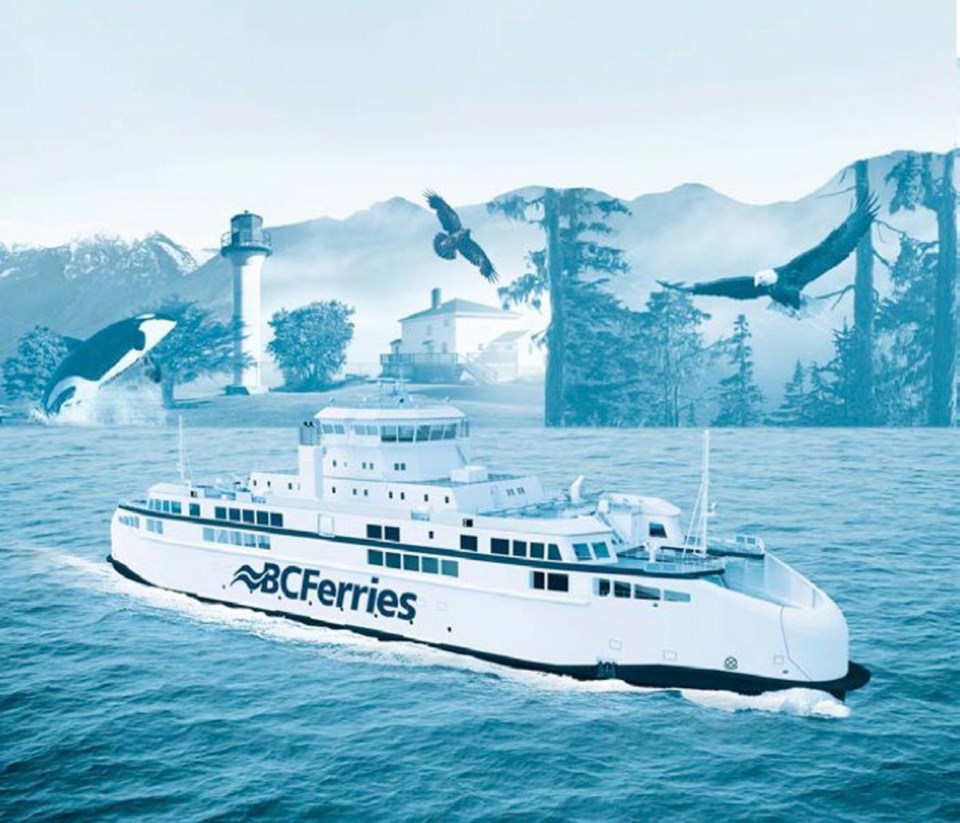 Attention southern Gulf Islands passengers: The crisis is over. Please put down your pitchforks, extinguish your torches and proceed to the car deck.
Attention southern Gulf Islands passengers: The crisis is over. Please put down your pitchforks, extinguish your torches and proceed to the car deck.
B.C. Ferries announced a new schedule Monday that largely allays the fears of people on the smallest islands — Pender, Mayne, Saturna, Galiano — who went into peasant-revolt mode after seeing proposed changes last summer.
Ah, but reversing course on that proposal meant disappointing people on the largest island, Salt Spring, who would have been the winners under the now-scuttled plan.
Still, Ferries appears to have done the impossible: If the competing interests are not all happy, they’re happyish — the equivalent of getting Guns N’ Roses to take the stage without killing each other (a minor miracle that has also come to pass).
Besides, any grumpiness should be offset by the highlights of the revamped Tsawwassen-southern Gulf Islands schedule, which is due to take effect in May 2017. They include:
• A 45 per cent increase in capacity in tourist season, thanks mainly to the replacement of one big ship and one little one with two medium-sized vessels;
• More direct sailings on the weekends in peak season; and
• Longer shoulder seasons at either end of summer, with two-ship (as opposed to single-ship) operations starting at the beginning of May and finishing on the Thanksgiving long weekend. Currently, the shoulder season is from the May long weekend until the end of June and from Labour Day until Thanksgiving.
The changes are all tied to 2017’s arrival of two new, natural gas-fuelled 145-car ferries, the Salish Raven and Salish Eagle, and the retirement of the 185-car Queen of Nanaimo, which sails to Tsawwassen. The Eagle will replace the Nanaimo in winter; both Salish-class ships will replace the Nanaimo-Bowen Queen combination in tourist season.
Last year, in anticipation of that shift, B.C. Ferries proposed a schedule that would have benefited Salt Spring — more direct sailings from Tsawwassen to Long Harbour, that sort of thing.
The plan reflected changing demographics and economies. The existing schedule, largely unchanged for more than three decades, was set when Salt Spring’s population was about 4,000. It’s close to 11,000 now, dwarfing the combined total of the rest of the southern Gulf Islands, where the population has been relatively constant. Salt Spring tourism keeps growing, too.
“We wanted the schedule to reflect future demand,” says Harold Swierenga, the chair of Salt Spring’s ferries advisory committee.
But that clashed with the reality of the other islands, which share an interconnected economy that is inextricably tied to the ferry schedule. All of life is lived to that rhythm, even more than on Salt Spring where, with three ferry terminals — Long Harbour, Vesuvius and Fulford Harbour — there is more flexibility.
So when Ferries proposed changing that rhythm last year, an uproar ensued: 260 of Saturna’s 350 residents turned out for a public meeting in August, while 400 of Pender’s 2,200 packed the school gym. Mayne was miffed. Galiano was aghast.
In the end, Ferries backed away from the most disruptive changes Monday, much to the relief of residents. “It’s not ‘hooray, we won,’ it’s ‘hooray, we didn’t get chewed up as much as we could have,” says Brian Hollingshead, who chairs the southern Gulf Islands ferries advisory group.
In fact, some long-standing grievances have been addressed. Pender residents won’t have to worry about the 11:45 a.m. run to Swartz Bay being full — like an overcrowded city bus blasting past your stop — by the time it reaches their island in winter. Those on Mayne will get a new mid-day direct sailing from Swartz Bay. Saturna will get a long-sought 3:10 p.m. departure from Swartz Bay — a seemingly insignificant 10-minute shift that will effectively shave two hours off a Vancouver trip.
“Every island has got something better than before, plus a few things that they don’t like but can live with,” Hollingshead said.
Doubts remain, though. On Salt Spring, Swierenga wonders what will happen on those nights when not everyone can fit on the Salish Eagle — smaller than the Nanaimo — as it leaves Tsawwassen for Long Harbour. If the overflow passengers try to get to Salt Spring via Swartz Bay, will Ferries hold the Swartz Bay-Fulford boat until they arrive, or will they be stranded overnight? That’s the sort of tweaking that will need to be addressed as Ferries sees how the new schedule works in practice.
For now, though, the overall plan seems palatable.
Or, as B.C. Ferries vice-president Mark Collins says, “We’ve reached what we think is the best achievable consensus.”



